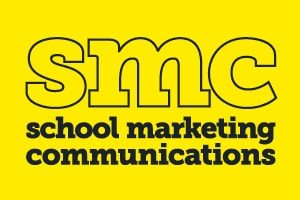School content marketing centres on creating, publishing and distributing content for your target audience as coined by Hubspot. This is often done to attract new customers online. Schools usually will execute this through blogs, enewsletters, social media channels, website SEO, video, ebooks or other gated content.
As with any marketing strategy, school content marketing has defined objectives. Commonly, these objectives include enrolment boosts, School Tour bookings, Open Day promotions or Prospectus request improvements. Here’s a reminder on how to promote and distribute content effectively.
Whether you have a full-scale content marketing plan in place, or are just venturing into the world of blogging, you will need to know if you have reached your goals. By analysing your content marketing analytics and data, you can assess what your audience is engaging with, what has potential, what needs revisiting and how you can plan and progress in the future.
Here is an overview on how to analyse your school’s content marketing with content analytics:
Website and blog pages
- Engagement – Using Google Analytics or your inbound marketing platform insights, you can review how your website pages or blog pages are performing by reviewing the available data they offer.
- Pages views – This refers to how many times your page has been viewed and gives a good indication if your content is relevant and popular to your audience.
- Average time on your page – This lets you know if your users are reading your content or just skimming through. It helps you find out if your content is easy to digest.
- Unique visitors – This shows how many unique visitors are checking your content and gives you an idea of your audience size. It will help you determine if you need to focus on the number of people that see your content.
- Bounce rate – This reveals the number of users who left your page without visiting any other pages. It can help you decide in adding calls to action on your page.
- Conversion rate – This refers to the percentage of visitors who took a desired action after interacting with your content e.g. clicking a call-to-action button. This is a very good indicator of how your content is performing in terms of compelling your visitors to take the text step.
- Organic traffic – this indicates the visits you have received organically from search engines, and it can give insight into your pages’ SEO potential.
Social media
- Followers – This refers to the number of users following your social media accounts which lets you know that they enjoy and relate to the content you are sharing. A thousand followers is a solid and consistent audience goal to aim for.
- Likes – The number of post, event or tweet likes shows the types of content your audience is attracted to and serves as proof if your content is relevant and appealing to them.
- Comments – Positive comments on your social media posts show that your content engages with your audience enough to generate a discussion.
- Impressions – This refers to the number of times that any content from your page entered a person’s screen. This includes posts, check-ins, ads, social information from people who interact with your page and more. High impressions can be proof that your content is far reaching.
- Audience demographics – This allows you to see who your audience is, segregated by indicators such as age, gender and interests, so you can tailor your content to match their needs more closely.
Emails
- Open Rate (OR) – This is the percentage of readers that opened your email, and it indicates if the subject line engages with your audience. This is a good metric when conducting A/B split testing for email subject lines.
- Click Through Rate (CTR) – This is the percentage of readers that were compelled to click on a link within your email, which can indicate that your content compelled them enough to take action or learn more.
- Heat map – The ‘hot’ areas on a heat map show where clicks are highest within an email and indicates what content the reader is most interested in within the copy. Is it the CTA, blog links or your website link?
- Keyword rankings – This reveals what keywords users are searching for and what keywords you should be focusing on. User behaviour is constantly changing so keep up-to-date with the latest algorithms and how your audience is searching.
This list is not comprehensive but analysing these content data is a good place to start. The data types are interchangeable for different methods, depending on your school’s content marketing efforts. The more you delve into your content marketing insights, the more information you will gather to inform future planning and content creation. This gives your content marketing activity meaning, value and direction.







